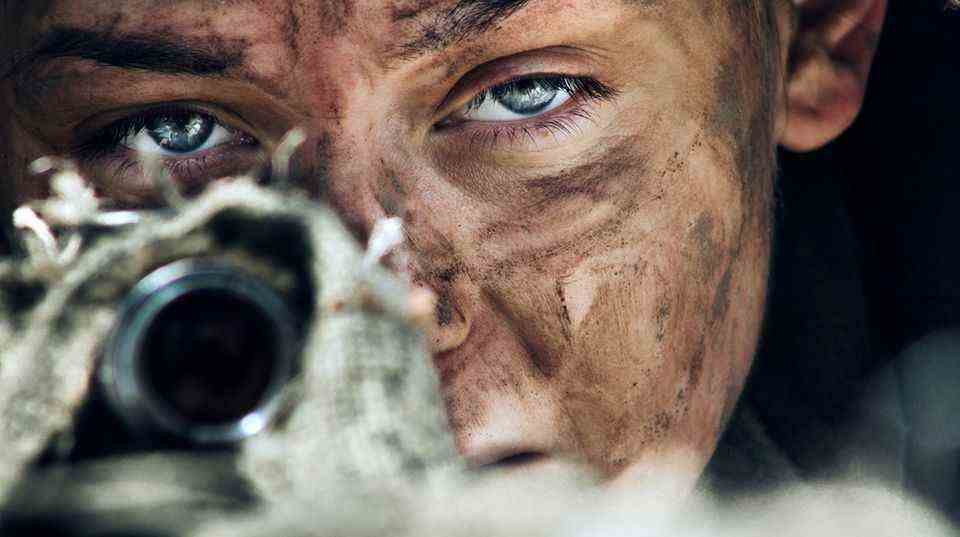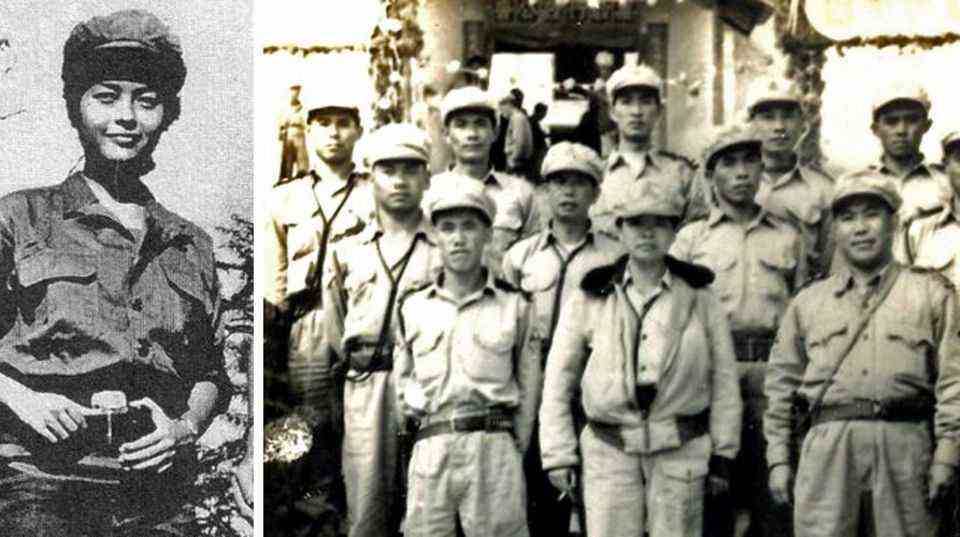Second World War
Lost German Girl 1945 – the net is struggling with the mystery surrounding this woman
On the film you can see that the woman can hardly speak.
© Commons
In May 1945, an injured woman staggered toward US Captain Oren W. Haglund and his camera. She became a symbol of suffering, and people have been trying to identify her for years.
At the end of World War II, the remaining German troops poured towards the US Army from the East. Here they promised themselves better treatment than if they surrendered to the Red Army. The associations that were located in today’s Czech Republic were also relatively intact. The focus of the last Soviet offensives in Berlin or Vienna had passed them by.
Captured on camera
The American camera crews recorded this flood in many places. Some of them were ragged and injured figures who struggled to drag themselves across the lines of the zones of influence. Other convoys reached the US soldiers in high spirits. The cars are full of officers with “lady escorts” – all of them not quite sober, as far as one can judge from the pictures.
Captain Oren W. Haglund captured a very different encounter on camera. On May 8, 1945 he was on a road in the direction of Pilsen, 78 kilometers from Prague. At the beginning, the footage shows captured Germans being taken care of by US troops.
Further down the street come troops who just surrender. Among them Eastern Europeans who fought on the German side. As he drives further, German SS men suddenly appear. They lie injured and mutilated by the roadside.
Troops from Prague
There are various explanations as to how this came about. One theory says they were massacred by partisans after they laid down their arms. Another explanation is that when the SS soldiers realized they were to be separated from the others, there was a commotion. US guards are said to have fired. But the film role did not become famous because of the dead and dying. A short time later Haglund staggered a young woman in the avenue in front of the lens.
The mysterious woman
Blonde, dressed in a shapeless uniform, and apparently injured. You can see her battered face as she clasps her hands pleadingly and looks at the camera. And then turns away from the camera. Since 2008, the mysterious “Lost German Girl” hasn’t let go of the net near Pilsen. Since then, attempts have been made to wrest the secret from the mysterious woman in a forum on a portal to the Second World War. But while the forum on the Axis powers was already able to identify many people, or at least was able to make plausible assignments, this was not possible here on 150 pages and with thousands of posts. The “Lost German Girl” remains a mystery, she only appears briefly in this snippet and then disappears again into oblivion.
What is certain is that she fled with the German troops. But whether as a military helper, paramedic, as a lover or simply as a so-called ethnic German can hardly be said. She is referred to as the “SS Girl” on the film card. However, it is not clear whether this is verified information or just an attribution, precisely because the girl was found with the SS soldiers. Their uniform gives no indication of their unit. Given the enormous pants, it’s not unlikely that the uniform probably wasn’t her own wardrobe at all. What is certain is that she was abused and slapped in the face.
Nice but made up
The most coherent story about the woman was too “good” to be true. It tells the fate of two women who fall into the hands of a gang. The sacrifice of one made it possible for the other – the “Lost German Girl” – to escape and saved her from certain death. That reads conclusively, but is too formulated to be really true. The narrative is a translation of a fictional story inspired by the film.
Another clue suggests that the “Lost German Girl” could be called Lara or Lore Bauer. This farmer (1921-1994) is said to have been a member of the Bund Deutscher Mädel and was trained as an assistant in the German Air Force. Photos of Bauer have similarities with the woman on the street near Pilsen, but there were also differences. In addition, she was not wearing the assistant’s uniform. The biographical data provided could not be verified. Worse, they appear to be plain wrong. In the film she is holding a deck of cards, but it may also be an ID card from the German Labor Front.

Lost German Girl on the country road 10 kilometers from Pilsen.
© Commons
Iconographic shots
Precisely because of her anonymity, “Lost German Girl” became a symbol of the suffering of women in World War II. And of course the recording also aroused opposition. How could a woman from the “perpetrators” be a victim? The answer is simple: “Lost German Girl” became a symbol when it was recorded. If Haglund hadn’t pointed the camera at her, no one would have noticed her. And these are not just any shots, they are icons of the reportage. Just like the picture of the boy with raised hands in the Warsaw ghetto stands out, the desperate women who are looking for their relatives under the frozen corpses on the Kerch River, or the English boy sitting with his teddy bear in front of a pile of rubble that was his house a moment ago is.
Haglund does not show the woman alone as a victim, despite her injuries, and her feeble pleading gesture shows Haglund a beautiful woman. Who is hurt and damaged, but not broken, whose will and pride could not be taken away entirely. Haglund does not show the “enemy”, the camera respects the wounded woman. This moment alone shows the inhumanity of war. In the last sequence she sits in the grass between the soldiers, cools her open brows with a cloth and then her pinched mouth smiles a little at the cameraman, whose presence promised safety. And then “Lost German Girl” disappeared from history again.
She later became known worldwide through the documentary “The World at War” from 1973-1974. Since then, the material has been used again and again.





